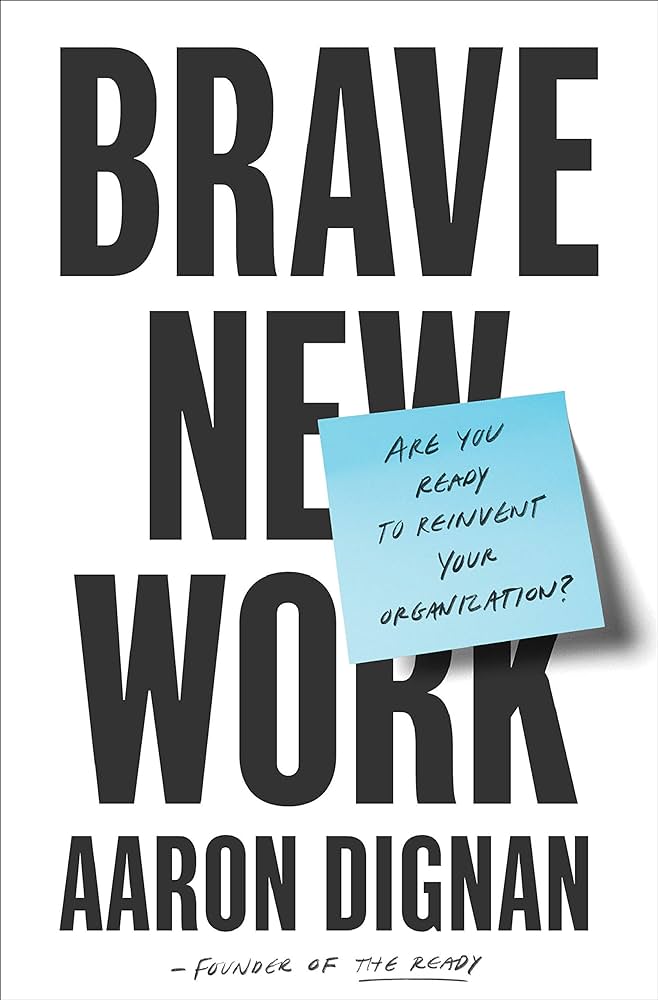Key Quote:
It’s often easier to make something 10 times better than it is to make it 10 percent better. . . Because when you’re working to make things 10 percent better, you inevitably focus on the existing tools and assumptions, and on building on top of an existing solution that many people have already spent a lot of time thinking about. . . But when you aim for a 10x gain, you lean instead on bravery and creativity—the kind that, literally and metaphorically, can put a man on the moon. — Aaron Dignan
Key Points and Concepts
The Problem
Many organizations see opportunities for improvement when it comes to meetings, execution, and growth, but the fear of losing the control we believe we have keeps us from pursuing those opportunities.
Though it may seem counterintuitive, controlling everything is not sustainable or fulfilling. If one or a few people in your organization control everything, you’ve built a fragile system that can’t run on its own.
Complex vs. Complicated:
To better understand our companies, think about traffic: A roundabout is complex; it requires drivers to be present, responsible, and keep things going. A traffic light is complicated; it doesn’t require much thinking (only compliance) and is monitored by an apparatus. Our companies are complex systems and we must work with the many components and understand each function.
“Unlike complicated problems, complex problems cannot be solved, only managed. They cannot be controlled, only nudged” (p. 44).
Most companies have work environments of little trust among employees, which is damaging to their culture. To avoid this, The Ready’s Operating System (OS) is built on distributed authority, consent, and agreements, so there are no positional leaders (p. 18).
London Business School professor Gary Hamel’s research demonstrated that about half of the 23.8 million management roles in the US are unnecessary because they could be taken on by other members of the organization at little cost, further supporting the idea that our companies are highly inefficient (p. 26).
Organizational debt is “any structure or policy that no longer serves an organization” (p. 27).
In trying to create order, we often times end up creating hundreds of useless rules, “leaving no ability to respond to the world as it unfolds… Organizational debt creates bureaucracy, and bureaucracy protects organizational debt” (p. 28).
Evolutionary Organizations
Evolutionary organizations are ones that have changed their OS to become more efficient. “When David Marquet took over the USS Santa Fe, the worst-performing ship in its fleet, he vowed never to give another order—only to share his vision. This allowed his people to think for themselves and claim responsibility, and the ship later went from last to first.” (p. 67).
Dignan claims that if we believe people are trustworthy, we give our employees more freedom. If we think they are lazy, we bombard them with work. Our businesses reflect our assumptions and beliefs about human nature; if you treat employees like rock stars, they will become rock stars (pp. 37-43).
Many companies’ entire Operating Systems need a complete transformation. We strive for incremental improvements (better bosses, more efficient meetings, etc.) and we don’t realize that we’re changing the recipe when we actually need to create an entirely new entrée.
Authority, Structure, and Strategy
Roles within our companies should not be as rigid as they often are. Job titles “mask the complexity of the roles we hold, and they limit our ability to shape them and step in and out of them freely. Instead, think of the organization as a rich network of roles that can be filled and shaped by anyone” (p. 80).
When companies prioritize everything, nothing is prioritized. “Even over” statements are helpful in recognizing a company’s true priorities (e.g., “existing user retention even over initial sign-up retention”) (p. 89).
Innovation, Meetings, and Information
The best ideas often come from accidents. Play-Doh was created as a wallpaper cleaning product until children started “misusing” it. “While we like to think of modern life as the result of human ingenuity and eureka moments, the truth is that accidental breakthroughs have led to as much success as their more intentional counterparts. Randomness and innovation are good friends” (p. 103).
Status updates are often unnecessary and disruptive. Leaders “often lack the context to understand complex initiatives and the situation at the edge. This can lead to naïve questions at best and irresponsible recommendations at worst” (p. 121).
Membership, Mastery, and Compensation
A lattice organization is one where each person interacts directly with every other person. There is no intermediary, eliminating authoritarian hierarchy. Having this type of communication system increases transparency and efficiency (p. 141).
Amazon strives to create a workplace where the right people stay. They offer up to $5,000 annually to employees to leave Amazon, ensuring that only those who are truly passionate about the job stay (p. 144).
It’s no question that work has become a place for many to perform, rather than learn, but “talent and skills don’t matter if we don’t have the maturity—the courage and humility—to welcome the conditions for continuous growth” (p. 154).
Dignan argues that incentive compensation is counterproductive—it strips activity of its intrinsic value and can promote unhealthy competition (p. 171).
Culture
Culture doesn’t happen to people, it happens among people. Culture cannot be designed or controlled. To effectively change an organization, you must change how you change the organization and imagine a new OS (p. 189).
Continuous participatory change occurs when everyone feels empowered to reshape the OS, which happens when people stop looking for a proven process and begin looking for patterns (pp. 190-192).
“OS transformation needs liminal space to survive… the space [must] be protected—from the rest of the organization and the outside world. Antibodies and muscle memory will emerge and try to maintain the status quo” (p. 196).
OS transformation has begun when enough people “are sufficiently committed to the ideals of self-management that going back to the way things were is impractical. The OS has undergone a phase transition and is now something else entirely. It is … the point of no return” (p. 216).
A company has achieved criticality when the language shifts. Your vocabulary to describe your business’s culture will expand. “Meeting” will become too generic—what kind of meeting?
• Highly successful companies create psychological safety for their employees. When people feel able to take risks, they’re better able to adapt and evolve to meet new challenges.
• To do the hard work of change, we need to make time for it. Continuous improvement is a discipline.
Dignan, A. (2019). Brave New Work: Are You Ready to Reinvent Your Organization? New York: Penguin Random House.

Though it may seem counterintuitive, controlling everything is not sustainable or fulfilling. If one or a few people in your organization control everything, you’ve built a fragile system that can’t run on its own.
It’s no question that work has become a place for many to perform, rather than learn, but “talent and skills don’t matter if we don’t have the maturity—the courage and humility—to welcome the conditions for continuous growth.”
Culture doesn’t happen to people, it happens among people. Culture cannot be designed or controlled. To effectively change an organization, you must change how you change the organization and imagine a new OS.
